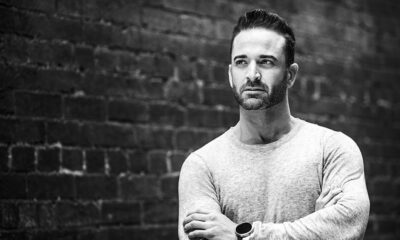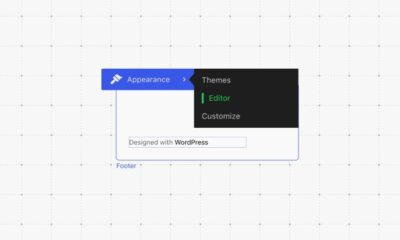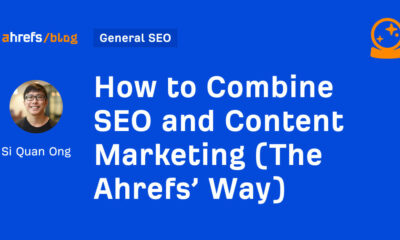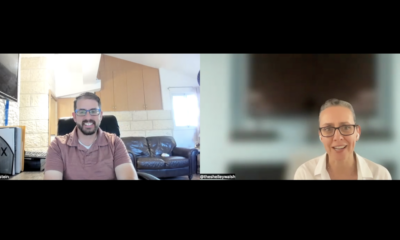SOCIAL
Why BuzzFeed Is Closing Its News Division
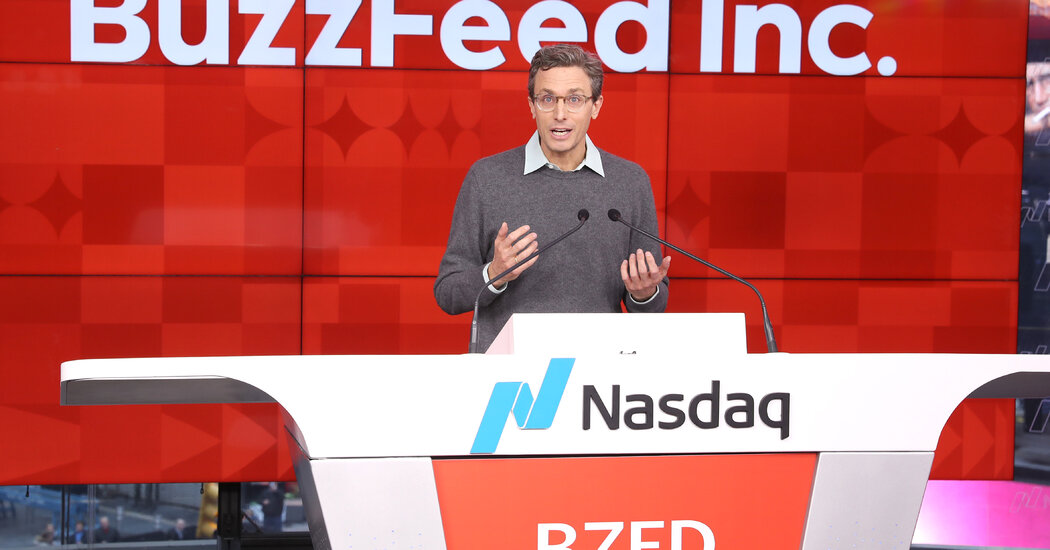
The reason this news pioneer is closing
BuzzFeed’s decision to shut its news division — an innovator in digital journalism that published both prizewinning investigations and listicles designed to get clicks — drew many bittersweet tributes online.
But its closure is the latest reminder that digital media start-ups, which deep-pocketed investors once valued at astronomical sums, are facing headwinds. With even tech giants struggling to navigate hurdles like a declining advertising market, smaller companies are facing potentially existential crises.
“We’ve faced more challenges than I can count in the past few years,” Jonah Peretti, BuzzFeed’s founder and C.E.O., wrote to employees yesterday, citing the pandemic and a weak stock market. BuzzFeed and its peers have also suffered from the same drop-off in online ads that is forcing sharp job cuts at Alphabet, Meta and others. And Mr. Peretti admitted that he hadn’t focused enough on profitability.
Mr. Peretti also alluded to the disappointing market for SPACs, the blank-check funds that were briefly a popular way to take companies public. BuzzFeed used one to list on the Nasdaq in late 2021 — and ended up raising just $16 million, far short of the $250 million it could have collected.
Digital media start-ups have flailed for years. Analysts have long warned that these companies rely too much on social media to gain readers. Networks like Facebook and Google ended up keeping most of the available ad dollars, and are increasingly favoring content formats that yield less money for publishers. (Ben Smith, the former BuzzFeed News chief who now runs the start-up Semafor, wrote that his former employer wasn’t prepared for the evolution of social networks.)
BuzzFeed isn’t alone:
-
Vice may close Vice World News, which produces content for international audiences, if it can’t find a buyer for itself, according to The Wall Street Journal.
-
Insider, which is owned by the German media giant Axel Springer, is laying off 10 percent of its staff.
-
Vox cut 7 percent of its workers in January.
-
A revamped Gawker shut down in February, while the Springer-owned Protocol shut in November.
Will shutting BuzzFeed News be enough to save BuzzFeed? Maybe, if it means that the company has to support just one online news operation. (Mr. Peretti said he’s making HuffPost, which BuzzFeed bought in 2020, its main focus for news publishing.)
BuzzFeed’s other operations are profitable, according to The Information. But investors still appear skeptical about the company’s prospects for survival: Its shares fell 20 percent yesterday, to 75 cents, though they’ve recovered some in premarket trading.
HERE’S WHAT’S HAPPENING
SpaceX sees the upside in a spacecraft explosion. The rocket company’s Starship prototype was destroyed in a fireball — sorry, a “rapid unscheduled disassembly” — over the Gulf of Mexico yesterday. But engineers at SpaceX, NASA and elsewhere said the launch likely yielded useful data to improve Starship, which is meant to eventually ferry astronauts to the moon and beyond.
U.S. home sales and prices tumble. Existing-home sales fell 2.4 percent in March from the previous month and 22 percent from March 2022; more striking was a 0.9 percent year-on-year drop in the median price, the biggest such decline in 11 years. Analysts cited rising mortgage rates, and the data will weigh on the Fed as it considers whether to raise interest rates.
Meta will slow hiring and may lay off more staff. Mark Zuckerberg, the company’s C.E.O., told staff members yesterday that the company had cut about 4,000 positions this week as part of a plan to lay off about a quarter of its work force. This will include closing Instagram’s London hub, less than a year after Adam Mosseri, the photo-sharing app’s boss, temporarily moved to London to build the business. He will relocate to the U.S.
Disney reportedly plans to escalate its fight against Gov. Ron DeSantis of Florida. The company is stepping up its lobbying efforts in the state’s legislature, with a focus on land-use bills that could affect the company, according to CNBC. The move comes as Mr. DeSantis and his lawmaker allies seek to unwind Disney’s efforts to reduce state control of its theme parks.
Twitter finally began stripping users of blue check marks. The company made good on Elon Musk’s threat to remove the icons — previously meant to show that a user’s identity had been verified — from thousands of people who didn’t subscribe to the Twitter Blue service. But some celebrities, including LeBron James and Stephen King, were reportedly given “complimentary” (and unsolicited) subscriptions to Twitter Blue.
Yellen seeks an opening with China
Treasury Secretary Janet Yellen’s speech on China yesterday drew attention for its conciliatory tone as much as the content of her comments: She called for a “constructive and fair” relationship with Beijing, while warning that economic decoupling would be “disastrous.”
China watchers noted the unusually calm message — but cautioned that it’s unlikely to resonate in Beijing.
Ms. Yellen sought to clarify the Biden administration’s approach. Other officials have tried to strike a tempered tone: Jake Sullivan, the national security adviser, has said that competition between the two countries shouldn’t veer into conflict, while the climate envoy John Kerry has stressed that the U.S. could work with China on issues like climate change.
“China’s economic growth need not be incompatible with U.S. economic leadership,” Ms. Yellen said yesterday, so long as Beijing adhered to established international rules. She added that she planned to travel to China, which would make her the highest-ranking U.S. official to visit the country since Joe Biden became president, in a recognition of the deep commercial links between the nations.
But Washington is sending mixed messages. The sight last month of Congressional lawmakers grilling the C.E.O. of TikTok, the video app owned by ByteDance of China, played into Beijing’s belief that the U.S. wants to hold back its economic development.
Even the Biden administration has been mostly tough on China. Just over a year ago, Secretary of State Antony Blinken called it the most serious “long-term” threat to the global order. And Biden reportedly plans to sign an executive order soon that would limit American investment in Chinese high-tech industries.
Yellen’s comments may not be enough to assuage China. Her speech clarified U.S. policy and offers “a dose of realism about the dangers of decoupling,” said Ben Bland, the director of the Asia-Pacific program at the think tank Chatham House.
But he added that from China’s perspective, U.S.-led efforts to “curb Beijing’s access to crucial technologies and build economic and security guardrails in the relationship may still feel like an effort to keep it down.”
“When Apple takes an interest in a company, it’s the kiss of death.”
— Joe Kiani, the founder of Masimo, a blood-oxygen measurement start-up. Kiani is one of several technology executives who told The Wall Street Journal that Apple reached out to discuss a potential partnership, only to later roll out competing technologies.
A social-media-powered bank run
Silicon Valley Bank’s collapse last month was called the first “Twitter-led bank run,” with many speculating that social media posts about the lender’s woes helped spark the rush of withdrawals that caused it to fail. Now, a group of finance professors has put the theory to the test — and found evidence that supports it.
“Social Media as a Bank Run Catalyst,” a new working paper, analyzes extensive Twitter and bank-stock data before and during the run on SVB, showing that intense chatter on the social media platform preceded a sharp share price decline and increased the risk of a bank run.
“Discussion amplifies risk,” J. Anthony Cookson, an associate professor of finance at the University of Colorado Boulder and the report’s lead author, told DealBook. “SVB was a high Twitter conversation stock,” he added, as the bank had many depositors who were hyper-connected tech company founders, so they tended to be online and “very chatty.”
Coordination is a well-known element of bank runs. But the new paper suggests that social media creates more risk than the slow spread of information among personal connections. “The implication that social media matters for banking stability is potentially troubling because social platforms can spread inaccurate information, which could serve as a sunspot that leads to bank runs,” the researchers wrote.
Still, Mr. Cookson noted that study in this area is at the very early stages. “The billion dollar question,” he said, “is what do we do about this?”
THE SPEED READ
Deals
-
The boutique investment bank Centerview Partners named Eric Tokat and Tony Kim as co-presidents, as the company identifies a new generation of leaders beyond its co-founders Blair Effron and Robert Pruzan. (FT)
-
Tiger Global reportedly told investors that its $12.7 billion venture fund had lost 20 percent on paper as of December, thanks to bad bets on FTX and other crypto start-ups. (The Information)
-
The Swiss government reaffirmed its $121 billion financial commitment to support UBS’s takeover of Credit Suisse, despite lawmakers’ symbolic vote to reject the move. (Reuters)
Policy
-
As part of their debt-limit plan, House Republicans want to recall billions in pandemic aid funds that Congress approved but that haven’t been spent. (NYT)
-
Canada agreed to nearly $10 billion in subsidies to convince Volkswagen to build a battery plant there instead of in the U.S., matching incentives the company would have received under the Inflation Reduction Act. (Bloomberg)
-
The Commerce Department fined the hard drive maker Seagate $300 million for continuing to supply Huawei even after the Chinese tech company was blacklisted. (CNBC)
Best of the rest
-
Lachlan Murdoch, the C.E.O. of Fox Corporation, dropped a defamation lawsuit against an Australian publisher. (NYT)
-
Several Anheuser-Busch facilities, including a Los Angeles brewery, received threats of violence amid conservative outrage over the beer giant’s partnership with a transgender influencer. (CNN Business)
-
The M.L.B.’s Oakland Athletics are leaving California for Las Vegas. (NYT)
We’d like your feedback! Please email thoughts and suggestions to [email protected].
SOCIAL
12 Proven Methods to Make Money Blogging in 2024

 This is a contributed article.
This is a contributed article.
The world of blogging continues to thrive in 2024, offering a compelling avenue for creative minds to share their knowledge, build an audience, and even turn their passion into profit. Whether you’re a seasoned blogger or just starting, there are numerous effective strategies to monetize your blog and achieve financial success. Here, we delve into 12 proven methods to make money blogging in 2024:
1. Embrace Niche Expertise:
Standing out in the vast blogosphere requires focus. Carving a niche allows you to cater to a specific audience with targeted content. This not only builds a loyal following but also positions you as an authority in your chosen field. Whether it’s gardening techniques, travel hacking tips, or the intricacies of cryptocurrency, delve deep into a subject you’re passionate and knowledgeable about. Targeted audiences are more receptive to monetization efforts, making them ideal for success.
2. Content is King (and Queen):
High-quality content remains the cornerstone of any successful blog. In 2024, readers crave informative, engaging, and well-written content that solves their problems, answers their questions, or entertains them. Invest time in crafting valuable blog posts, articles, or videos that resonate with your target audience.
- Focus on evergreen content: Create content that remains relevant for a long time, attracting consistent traffic and boosting your earning potential.
- Incorporate multimedia: Spice up your content with captivating images, infographics, or even videos to enhance reader engagement and improve SEO.
- Maintain consistency: Develop a regular publishing schedule to build anticipation and keep your audience coming back for more.
3. The Power of SEO:
Search Engine Optimization (SEO) ensures your blog ranks high in search engine results for relevant keywords. This increases organic traffic, the lifeblood of any monetization strategy.
- Keyword research: Use keyword research tools to identify terms your target audience searches for. Strategically incorporate these keywords into your content naturally.
- Technical SEO: Optimize your blog’s loading speed, mobile responsiveness, and overall technical aspects to improve search engine ranking.
- Backlink building: Encourage other websites to link back to your content, boosting your blog’s authority in the eyes of search engines.
4. Monetization Magic: Affiliate Marketing
Affiliate marketing allows you to earn commissions by promoting other companies’ products or services. When a reader clicks on your affiliate link and makes a purchase, you get a commission.
- Choose relevant affiliates: Promote products or services that align with your niche and resonate with your audience.
- Transparency is key: Disclose your affiliate relationships clearly to your readers and build trust.
- Integrate strategically: Don’t just bombard readers with links. Weave affiliate promotions naturally into your content, highlighting the value proposition.
5. Display Advertising: A Classic Approach
Display advertising involves placing banner ads, text ads, or other visual elements on your blog. When a reader clicks on an ad, you earn revenue.
- Choose reputable ad networks: Partner with established ad networks that offer competitive rates and relevant ads for your audience.
- Strategic ad placement: Place ads thoughtfully, avoiding an overwhelming experience for readers.
- Track your performance: Monitor ad clicks and conversions to measure the effectiveness of your ad placements and optimize for better results.
6. Offer Premium Content:
Providing exclusive, in-depth content behind a paywall can generate additional income. This could be premium blog posts, ebooks, online courses, or webinars.
- Deliver exceptional value: Ensure your premium content offers significant value that justifies the price tag.
- Multiple pricing options: Consider offering tiered subscription plans to cater to different audience needs and budgets.
- Promote effectively: Highlight the benefits of your premium content and encourage readers to subscribe.
7. Coaching and Consulting:
Leverage your expertise by offering coaching or consulting services related to your niche. Readers who find your content valuable may be interested in personalized guidance.
- Position yourself as an expert: Showcase your qualifications, experience, and client testimonials to build trust and establish your credibility.
- Offer free consultations: Provide a limited free consultation to potential clients, allowing them to experience your expertise firsthand.
- Develop clear packages: Outline different coaching or consulting packages with varying time commitments and pricing structures.
8. The Power of Community: Online Events and Webinars
Host online events or webinars related to your niche. These events offer valuable content while also providing an opportunity to promote other monetization avenues.
- Interactive and engaging: Structure your online events to be interactive with polls, Q&A sessions, or live chats. Click here to learn more about image marketing with Q&A sessions and live chats.
9. Embrace the Power of Email Marketing:
Building an email list allows you to foster stronger relationships with your audience and promote your content and offerings directly.
- Offer valuable incentives: Encourage readers to subscribe by offering exclusive content, discounts, or early access to new products.
- Segmentation is key: Segment your email list based on reader interests to send targeted campaigns that resonate more effectively.
- Regular communication: Maintain consistent communication with your subscribers through engaging newsletters or updates.
10. Sell Your Own Products:
Take your expertise to the next level by creating and selling your own products. This could be physical merchandise, digital downloads, or even printables related to your niche.
- Identify audience needs: Develop products that address the specific needs and desires of your target audience.
- High-quality offerings: Invest in creating high-quality products that offer exceptional value and user experience.
- Utilize multiple platforms: Sell your products through your blog, online marketplaces, or even social media platforms.
11. Sponsorships and Brand Collaborations:
Partner with brands or businesses relevant to your niche for sponsored content or collaborations. This can be a lucrative way to leverage your audience and generate income.
- Maintain editorial control: While working with sponsors, ensure you retain editorial control to maintain your blog’s authenticity and audience trust.
- Disclosures are essential: Clearly disclose sponsored content to readers, upholding transparency and ethical practices.
- Align with your niche: Partner with brands that complement your content and resonate with your audience.
12. Freelancing and Paid Writing Opportunities:
Your blog can serve as a springboard for freelance writing opportunities. Showcase your writing skills and expertise through your blog content, attracting potential clients.
- Target relevant publications: Identify online publications, websites, or magazines related to your niche and pitch your writing services.
- High-quality samples: Include high-quality blog posts from your site as writing samples when pitching to potential clients.
- Develop strong writing skills: Continuously hone your writing skills and stay updated on current trends in your niche to deliver exceptional work.
Conclusion:
Building a successful blog that generates income requires dedication, strategic planning, and high-quality content. In today’s digital age, there are numerous opportunities to make money online through blogging. By utilizing a combination of methods such as affiliate marketing, sponsored content, and selling digital products or services, you can leverage your blog’s potential and achieve financial success.
Remember, consistency in posting, engaging with your audience, and staying adaptable to trends are key to thriving in the ever-evolving blogosphere. Embrace new strategies, refine your approaches, and always keep your readers at the forefront of your content creation journey. With dedication and the right approach, your blog has the potential to become a valuable source of income and a platform for sharing your knowledge and passion with the world, making money online while doing what you love.
Image Credit: DepositPhotos
SOCIAL
Snapchat Explores New Messaging Retention Feature: A Game-Changer or Risky Move?

In a recent announcement, Snapchat revealed a groundbreaking update that challenges its traditional design ethos. The platform is experimenting with an option that allows users to defy the 24-hour auto-delete rule, a feature synonymous with Snapchat’s ephemeral messaging model.
The proposed change aims to introduce a “Never delete” option in messaging retention settings, aligning Snapchat more closely with conventional messaging apps. While this move may blur Snapchat’s distinctive selling point, Snap appears convinced of its necessity.
According to Snap, the decision stems from user feedback and a commitment to innovation based on user needs. The company aims to provide greater flexibility and control over conversations, catering to the preferences of its community.
Currently undergoing trials in select markets, the new feature empowers users to adjust retention settings on a conversation-by-conversation basis. Flexibility remains paramount, with participants able to modify settings within chats and receive in-chat notifications to ensure transparency.
Snapchat underscores that the default auto-delete feature will persist, reinforcing its design philosophy centered on ephemerality. However, with the app gaining traction as a primary messaging platform, the option offers users a means to preserve longer chat histories.
The update marks a pivotal moment for Snapchat, renowned for its disappearing message premise, especially popular among younger demographics. Retaining this focus has been pivotal to Snapchat’s identity, but the shift suggests a broader strategy aimed at diversifying its user base.
This strategy may appeal particularly to older demographics, potentially extending Snapchat’s relevance as users age. By emulating features of conventional messaging platforms, Snapchat seeks to enhance its appeal and broaden its reach.
Yet, the introduction of message retention poses questions about Snapchat’s uniqueness. While addressing user demands, the risk of diluting Snapchat’s distinctiveness looms large.
As Snapchat ventures into uncharted territory, the outcome of this experiment remains uncertain. Will message retention propel Snapchat to new heights, or will it compromise the platform’s uniqueness?
Only time will tell.
SOCIAL
Catering to specific audience boosts your business, says accountant turned coach

While it is tempting to try to appeal to a broad audience, the founder of alcohol-free coaching service Just the Tonic, Sandra Parker, believes the best thing you can do for your business is focus on your niche. Here’s how she did just that.
When running a business, reaching out to as many clients as possible can be tempting. But it also risks making your marketing “too generic,” warns Sandra Parker, the founder of Just The Tonic Coaching.
“From the very start of my business, I knew exactly who I could help and who I couldn’t,” Parker told My Biggest Lessons.
Parker struggled with alcohol dependence as a young professional. Today, her business targets high-achieving individuals who face challenges similar to those she had early in her career.
“I understand their frustrations, I understand their fears, and I understand their coping mechanisms and the stories they’re telling themselves,” Parker said. “Because of that, I’m able to market very effectively, to speak in a language that they understand, and am able to reach them.”Â
“I believe that it’s really important that you know exactly who your customer or your client is, and you target them, and you resist the temptation to make your marketing too generic to try and reach everyone,” she explained.
“If you speak specifically to your target clients, you will reach them, and I believe that’s the way that you’re going to be more successful.
Watch the video for more of Sandra Parker’s biggest lessons.
-

 SEARCHENGINES5 days ago
SEARCHENGINES5 days agoBillions Of Google goo.gl URLs To 404 In The Future
-
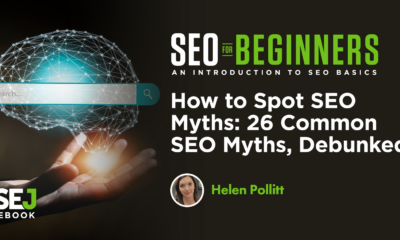
 SEO7 days ago
SEO7 days ago26 Common SEO Myths, Debunked
-
SEARCHENGINES4 days ago
Daily Search Forum Recap: July 22, 2024
-

 SEO5 days ago
SEO5 days ago11 Copyscape Alternatives To Check Plagiarism
-

 SEARCHENGINES6 days ago
SEARCHENGINES6 days agoGoogle Core Update Coming, Ranking Volatility, Bye Search Notes, AI Overviews, Ads & More
-

 SEO6 days ago
SEO6 days agoGoogle Warns Of Last Chance To Export Notes Search Data
-
SEARCHENGINES3 days ago
Daily Search Forum Recap: July 23, 2024
-
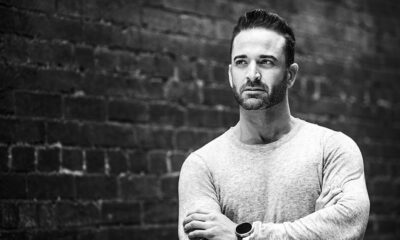
 AFFILIATE MARKETING6 days ago
AFFILIATE MARKETING6 days agoThe Top 5 AI Tools That Can Revolutionize Your Workflow and Boost Productivity


